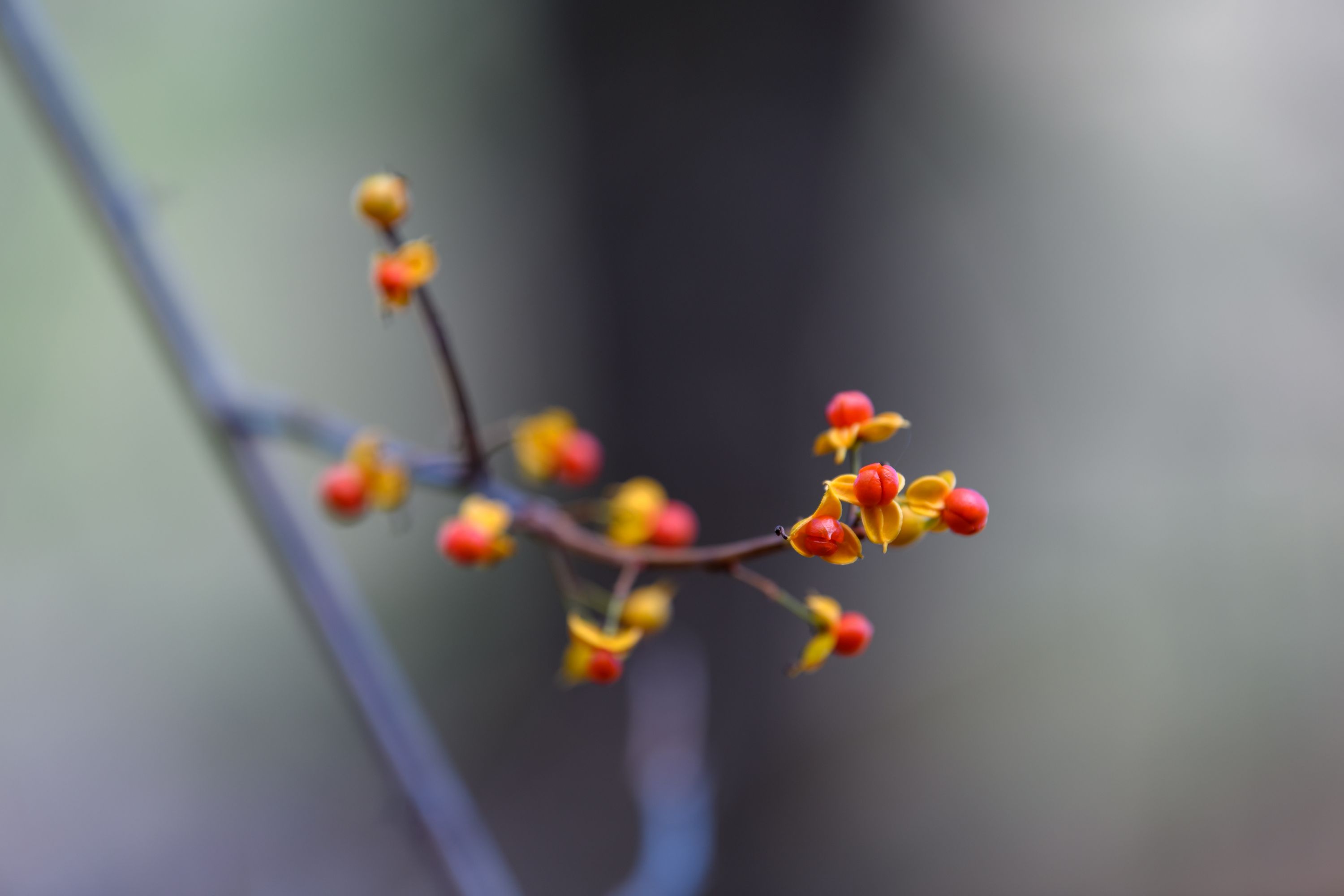Chinese bittersweet
(Celastrus orbiculatus)

Description
Celastrus orbiculatus is a woody vine of the family Celastraceae. It is commonly called Oriental bittersweet, as well as Chinese bittersweet, Asian bittersweet, round-leaved bittersweet, and Asiatic bittersweet. It is native to China, where it is the most widely distributed Celastrus species, and to Japan and Korea. It was introduced into North America in 1879, and is considered to be an invasive species in eastern North America. It closely resembles the native North American species, Celastrus scandens, with which it will readily hybridize. The defining characteristic of the plant is its vines: they are thin, spindly, and have silver to reddish brown bark. They are generally between 1 and 4 cm (0.4 and 1.6 in) in diameter. However, if growth is not disturbed, vines can exceed 10 cm (3.9 in) and when cut, will show age rings that can exceed 20 years. When Celastrus orbiculatus grows by itself, it forms thickets; when it is near a tree the vines twist themselves around the trunk as high as 40 feet. The encircling vines have been known to strangle the host tree to death or break branches from the excess weight, which is also true of the slower-growing American species, C. scandens. The leaves are round and glossy, 2–12 cm (0.8–4.7 in) long, have toothed margins and grow in alternate patterns along the vines. Small green flowers produce distinctive red seeds which are encased in yellow pods that break open during autumn. All parts of the plant are poisonous. Due to systematic disturbances to eastern forests for wood production and recreation, Oriental bittersweet has naturalized to landscapes, roadsides, and woodlands of eastern North America. In the United States it can be found as far south as Louisiana, as far north as Maine, and as far west as the Rocky Mountains. It prefers mesic woods, where it has been known to eclipse native plants. Celastrus orbiculatus is cultivated as an ornamental plant. In the UK it has gained the Royal Horticultural Society's Award of Garden Merit. Oriental bittersweet is a strong competitor in its environment, and its dispersal has endangered the survival of several other species. One attribute that contributes to the success of this species is having attractively colored fruit. As a result, it is eaten by mammals and birds, which excrete the seeds to different locations.
Taxonomic tree:







